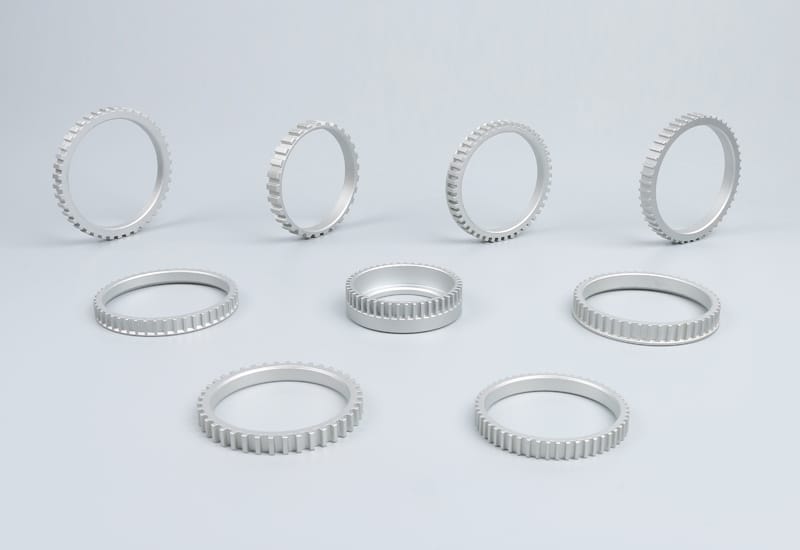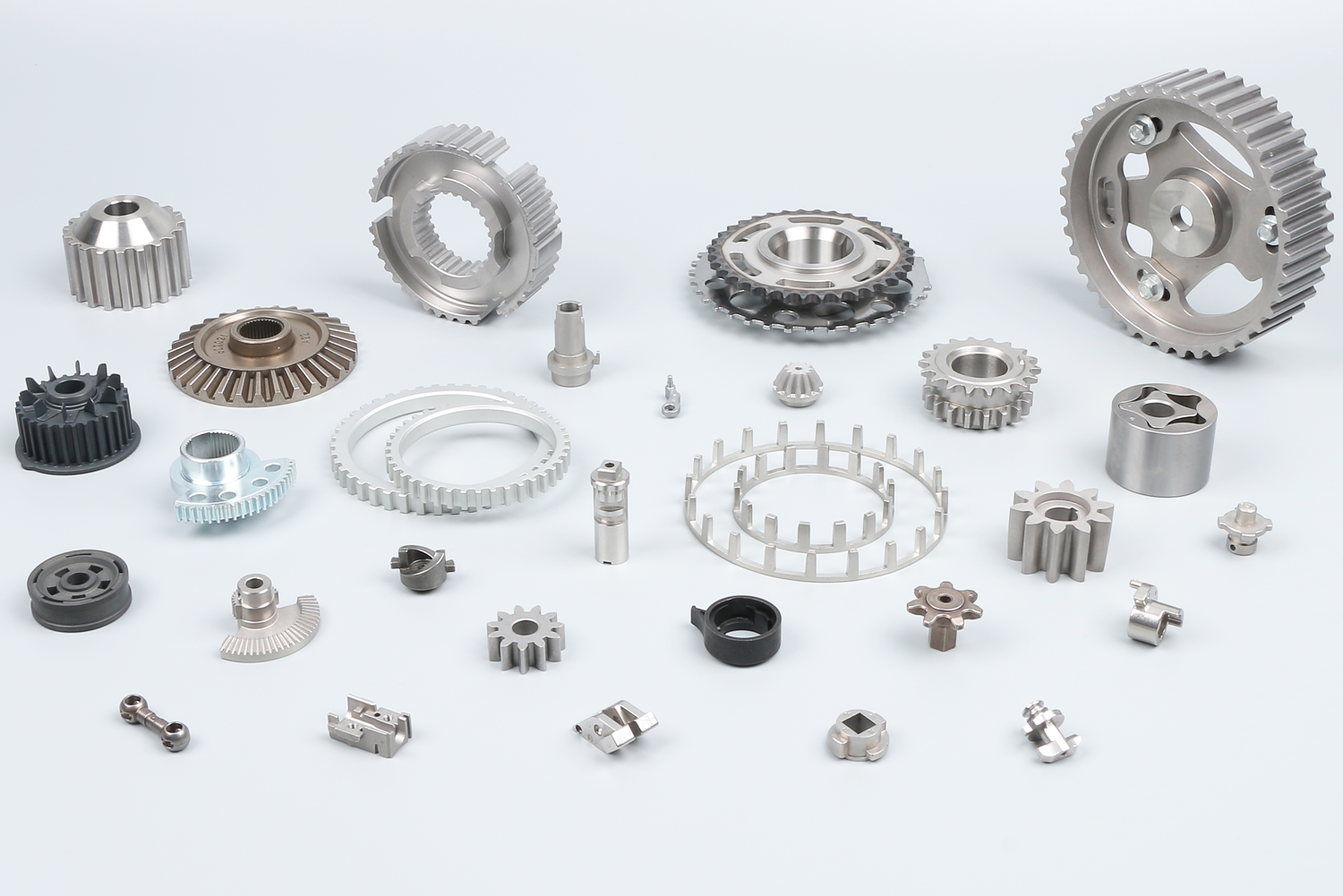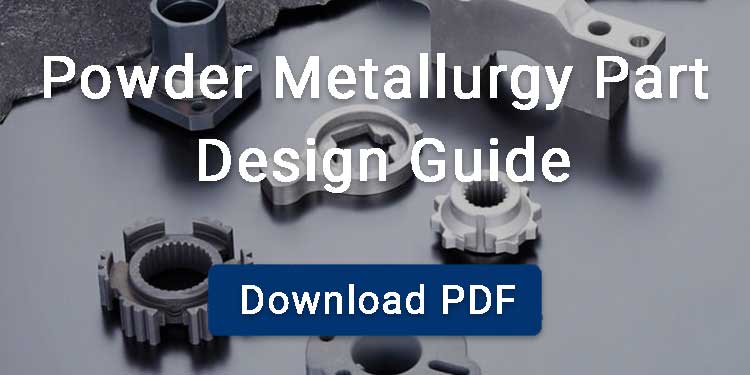There is a high demand for sustainable transportation options with less carbon emissions, which has led to the emergence of electric vehicles (EVs). Electric vehicles are vehicles that are powered by electricity, either fully or partially. However, with EVs, there is a need to enhance efficiency and reduce costs, hence the involvement of advanced manufacturing methods such as powdered metallurgy.
PM produces components with high precision, excellent mechanical properties, and minimizes waste. The ability to produce lightweight motor parts and optimize battery systems makes powder metallurgy reliable for EVs with significant advantages.
Contents
Powder Metallurgy Process
Powder metallurgy (PM) is a manufacturing process where fine metal powders are compacted into a defined shape and consolidated through sintering under controlled conditions. Through powder metallurgy process, metals and alloys are formed without melting, resulting in components with uniform microstructure and high dimensional precision. The fundamental steps of the powder metallurgy process include powder production, mixing and blending, compaction, and sintering.
Powder production
The metal powders used for powder metallurgy are manufactured using techniques such as atomization, reduction, or electrolysis. To achieve homogeneity, the powders are mixed and blended with binders, lubricants, and additives by a mixing process. This ensures the powder has a consistent particle size and composition, allowing for optimal compaction and consistent sintering. Ultimately, this contributes to the production of high-quality powder metallurgy parts with improved mechanical properties.
Compaction
After blending, the powders are placed in a die and compacted under high pressures (commonly 400-800MPa), to form a “green” part that holds its shape. Softer metals like copper need lower pressures, and harder metals like steel require higher pressures. Compacting for high-quality automotive components needed for electric vehicles will require advanced presses, including multi-action systems, that enable accurate and consistent compaction.
Sintering
In this step, the compacted part is heated in a controlled atmosphere just below the metal’s melting point and held there for diffusion and metallurgical bonding between powder particles. This fuses the particles, removes internal pores, and stabilizes the microstructure, thus improving strength and density. It is important that the sintering environment is carefully managed and can be enriched with gases such as carbon or nitrogen to produce a reducing, neutral, or carburizing atmosphere.
Applications of Powder Metallurgy in Electric Vehicles
ABS Sensor Ring
Powder metallurgy ABS sensor rings are commonly used in electric vehicle ABS systems, combining high precision, high strength, and reliable magnetic response. Developed by BLUE, these ABS rings are made of an Fe-0.8Ni-3Co-0.2P alloy with a density of 7.15 g/cm³, a hardness of HRB 55, and a tensile strength of 421 MPa. Their magnetic flux density reaches 1.12 T, ensuring precise wheel speed detection. Our ABS sensor ring is treated with a Dacromet coating, achieving 240-hour neutral salt spray resistance without corrosion.

Sintered Bushings
Sintered bushings are extensively applied in electric vehicle motors, transmissions, and steering assemblies for their self-lubricating properties, long service life, and cost efficiency. Produced by powder metallurgy, metal powders such as iron, bronze, or copper alloys are compacted, sintered, and subsequently oil impregnated, creating a porous structure that provides continuous lubrication with minimal maintenance. After sizing process, these bushings can achieve dimensional tolerances in the IT5–IT7 range
Direct Current Motors
Powder metallurgy is used to manufacture high-performance electric (DC) motor components such as rotors, stators, and brush holders. The ability to create parts with precise magnetic properties is beneficial for maximum motor efficiency and enhanced power output.
Battery Storage Components
The manufacturing of thermal management components and battery packaging elements via powder metallurgy contributes to the efficiency of battery systems in EVs. Alloys produced through PM provide high conductivity, thermal resistance, and corrosion resistance, hence enhancing the lifespan and reliability of the battery packs.
Windshield Wiper
Powder metallurgy also produces electric motors used in windshield wiper systems. Thanks to the lightweight and density, the parts tend to be durable and long-lasting. Additionally, the quiet operation of PM components enhances the quality and efficiency of the vehicle.
Thermal Management System
Maintaining optimal temperatures for batteries, motors, and power electronics is crucial in EVs. Powder metallurgy enables the production of heat exchangers, water pumps, cooling systems, and other thermal management parts with channels for efficient heat transfer. Lightweight materials with high thermal conductivity can be precisely shaped to maximize cooling performance during operations.
Other Electric Vehicle Parts
Powder metallurgy is used to produce other parts of electric vehicles, such as the sunroof, window motors, brake systems, automatic car seats, etc. Also, it manufactures durable, high-precision gears and transmission system components that operate efficiently with less noise.
Benefits of Powder Metallurgy in Electric Vehicles
Lightweight Components
Weight reduction is one of the most important strategies in electric vehicle design. Lighter vehicles require less energy to move, extending driving range and improving battery efficiency. Powder metallurgy allows manufacturers to create lightweight yet durable components by using specific alloys and optimizing part geometry. This makes it possible to achieve significant weight savings without compromising structural integrity.
Cost-effective for Mass Production
Apart from the initial tooling cost, powder metallurgy offers a unique cost efficiency for high-volume or mass production. The process is repeatable, enabling consistency in quality and tight tolerances across thousands or even millions of parts. For EV manufacturers concerned about meeting growing demand, PM can help reduce unit costs by producing near-net-shaped components without requiring post-processing touches.
Minimized Material Waste
The EV innovation is big on sustainability, and PM aligns perfectly with this goal. Powder metallurgy minimizes waste by using almost all the input material, unlike traditional machining, where a significant portion of raw material is removed as scrap and discarded or recycled. This not only reduces environmental impact but also lowers raw material costs, especially when using expensive specialty alloys and during mass production.
Complex Shapes and Designs
Powder metallurgy provides the platform to produce intricate shapes that would be difficult or costly to achieve with conventional machining. For EV manufacturers, this means the number of separate parts and assembly steps can be reduced by designing components with integrated features. Additionally, PM offers the freedom to design desired parts that meet specific needs.
Improved Magnetic Performance
Powder metallurgy enables Soft Magnetic Composites (SMC) that lower motor noise and vibration while boosting magnetic efficiency. With lighter weight and freedom in shape design, SMC parts make EV powertrains quieter, more efficient, and capable of longer range.
Energy Conservation in Production
There is reduced energy consumption because powder metallurgy avoids fully melting metals, thereby using less energy compared to casting. Also, the near-net shape capability of PM mitigates the need for machining processes that are energy-intensive. This is in line with the sustainability goals of EV production by lowering the carbon footprint related to manufacturing.

Challenges and Limitations
High initial tooling costs
Designing and manufacturing precision dies and molds can be expensive, making PM most cost-effective for large production runs.
Limited size for some parts
The compaction process can be difficult for very large components, limiting PM’s applicability for certain EV parts.
Material compatibility issues
Not all metals and alloys are suitable for powder metallurgy, which may require alternative processes for specific applications.
BLUE is a leading powder metallurgy manufacturer supplying a full range of parts with no mold fees. Our standard shop includes solutions for electric vehicles, automobiles, motorcycles, power tools, and household appliances. You can select matching standard parts directly from our SHOP, and if the exact item is not available, we provide custom powder metallurgy services.
FAQ
How Does Powder Metallurgy Impact the Environmental Footprint of EV Manufacturing?
Powder metallurgy minimizes material waste, reduces energy use by avoiding full melting, and allows for the recycling of unused powder. This makes it a more environmentally friendly process compared to traditional manufacturing methods, supporting the sustainability goals of EV production.



